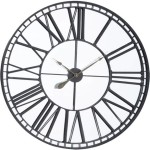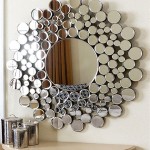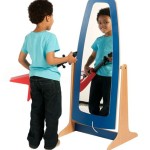How to Mirror One TV to Another or a PC
Mirroring a TV screen to another TV or a PC offers a range of practical applications, from sharing presentations and multimedia content to extending the viewing area for entertainment. Several methods exist to achieve this, each with its own advantages and specific requirements.
Using HDMI Cables and Splitters
A straightforward method for mirroring one TV to another involves using HDMI cables and an HDMI splitter. This approach is particularly suitable for short-range mirroring and provides a stable, high-quality connection.
Key points:
- Connect an HDMI cable from the source TV's HDMI output to the input of the HDMI splitter.
- Connect HDMI cables from the output ports of the splitter to the HDMI input ports of the destination TV(s).
- Ensure both TVs are powered on and select the correct HDMI input source.
- This method provides minimal latency and supports high-resolution video and audio.
Wireless HDMI Transmitters and Receivers
Wireless HDMI kits offer a cable-free solution for mirroring, eliminating the need for long HDMI cables. These kits typically consist of a transmitter connected to the source TV and a receiver connected to the destination TV.
Key points:
- Connect the transmitter to the HDMI output of the source TV.
- Connect the receiver to the HDMI input of the destination TV.
- Power on both the transmitter and receiver.
- Ensure both devices are paired according to the manufacturer's instructions.
- Wireless HDMI can experience some latency or interference depending on the environment.
- This method is useful for situations where cable routing is difficult or undesirable.
Screen Mirroring with Smart TVs
Many modern Smart TVs offer built-in screen mirroring capabilities. This feature often relies on technologies like Miracast or Wi-Fi Direct, allowing for wireless mirroring from compatible devices.
Key points:
- Ensure both TVs are connected to the same Wi-Fi network.
- Enable screen mirroring on both the source and destination TVs through their respective settings menus.
- Select the destination TV from the list of available devices on the source TV.
- Compatibility and specific steps may vary depending on the TV brands and models.
Mirroring a TV to a PC Using a Capture Card
Mirroring a TV to a PC requires a capture card, a hardware device that captures video and audio signals. This method is particularly useful for recording gameplay, creating tutorials, or streaming content.
Key points:
- Install the necessary software for the capture card on the PC.
- Connect the HDMI output of the source TV to the HDMI input of the capture card.
- Connect the capture card to the PC via USB or another compatible interface.
- Open the capture card software on the PC and select the appropriate input source.
- The TV's display will be shown within the capture card software's window on the PC.
Software-Based Screen Mirroring for PCs
Several software solutions facilitate screen mirroring between PCs and other devices, including TVs that support screen mirroring functionalities.
Key points:
- Ensure both the PC and the destination device (e.g., another PC or a Smart TV) are on the same network.
- Choose a compatible screen mirroring software, such as AirServer or Reflector.
- Install and run the chosen software on both the PC and the destination device, if required.
- Follow the software's instructions to initiate the mirroring process.
- Performance may be affected by network conditions.
Using Streaming Devices for Mirroring
Streaming devices like Chromecast, Roku, or Amazon Fire TV Stick offer screen mirroring capabilities, enabling users to mirror content from their PCs or mobile devices to their TVs.
Key points:
- Ensure the streaming device and the source device (PC or mobile) are on the same network.
- Open the desired content on the source device.
- Select the casting or mirroring option, usually indicated by a screen mirroring icon.
- Choose the streaming device from the list of available devices.
- Certain apps may have their own built-in casting features.
Considerations for Mirroring
Several factors can influence the effectiveness of screen mirroring:
- Network Bandwidth: Wireless mirroring methods require sufficient network bandwidth for smooth performance. A strong and stable Wi-Fi connection is essential.
- Latency: Some latency is inherent in wireless screen mirroring technologies. This delay may be noticeable during activities requiring real-time interaction, such as gaming.
- Compatibility: Ensuring compatibility between the source and destination devices and the chosen mirroring method is crucial for successful mirroring.
- HDCP Protection: High-bandwidth Digital Content Protection (HDCP) can sometimes interfere with mirroring. Disabling HDCP on the source device might be necessary in certain cases.
Selecting the appropriate method depends on the specific setup, required quality, and the available equipment. Careful consideration of these factors ensures a successful and satisfactory mirroring experience.

Top 3 Feasible Ways On How To Mirror Windows 10 Tv

Multi Device Mirroring The Ultimate Solution For Screen Sharing

7 Ways How To Cast Your Laptop Pc Screen Tv In 2024

Mirror Windows Pc To Roku Tv In Just A Few Easy Steps Connect Wireless Display

How To Screen Mirror Multiple Devices Apple Tv Simultaneously

How To Connect Mirror Laptop Screen On Any Smart Tv Wirelessly No App

Connecting Laptop To The Tv With Just A Few Simple Steps Resource Centre By Reliance Digital

How To Mirror Iphone Windows Pc Laptop Mac Full Guide

How To Screen Mirror Mac Hitachi Tv Wireless Try Free App

How To Mirror Your Chromebook S Screen A Tv With Hdmi








